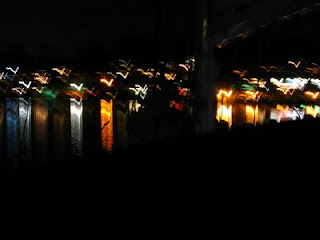Friday, Sept 16 and Saturday Sept 17
(delayed due to sparse internet connectivity in the South Sound)
On an out-and-back trip, one of the problems is that the return trip can be kind of anti-climatic. As soon as you turn around, you are in territory you covered only a little while ago, and there is a mixture of the beginnings of nostalgia and the undeniable draw of home. We try to minimize this by stopping in alternate places where possible. But portions of the trip are inevitably repeats. Nevertheless, with the wind as propulsion, it is unlikely that both the outbound and inbound legs will be identical.
We rose early again (rats!) and motored out of Filucy Bay ("wind as propulsion"? not on this leg), heading for Gig Harbor once again. It was a strangely uneventful trip... We only saw three other boats in the entire distance: the strange part was that these were three Canadian military vessels (#60, #61, #62). We met them as they traversed Balch Passage, and we speculated that perhaps Olympia was about to be invaded by Canada.
 |
A view of the Tacoma Narrows
bridges that most will never see |
Passing under the (now dual!) span of the Tacoma Narrows bridge is always a rush - literally a rush if you do it properly, with the tide.
We moved to the back of the harbor in Gig Harbor once again, in about the same place we had been a few days prior. Tho the depth shown on the chart was a uniform 23 feet, as we drifted back and forth on the anchor, we occasionally saw depths of 14 feet. I joked that perhaps there was a wreck down there.
It was a pretty evening and nite, and I experimented again with long-exposure pictures. Normally I would have discarded this one, but something in the colors and shapes interested me, in an abstract sort of way.
Next morning: final, or final but one leg. The wind forecast for Monday was for 20-25 kt at Shilshole, and I didn't really want to dock in that much wind. So we hoped to use Sunday's 10-15 kt southerlies as travelling wind and get tied to the dock ahead of the big blow.
The first setback occurred as we hoisted anchor. I was down in the bow, flaking the chain as it came aboard as usual. I noticed that the windless seemed to be running unusually slow... and then Jane called me up topside. Uh oh. There really was something down there. Tho I can't say for certain if there was a wreck, there was certainly an abandoned old-fashioned anchor and its rode.
Kudos to our windless for being able to hoist this mess up to the surface where it could be dealt with!
The time-honored way to clean up this situation is to pass a line under the offending object, securing both ends on deck. Then you lower your anchor, away from the now-suspended object. In the picture I have started reeving the line. The procedure worked for us (the second time we have had to do it), and the old anchor is back on the bottom of Gig Harbor. It would have made a really neat souvenir, except that we really had no way to carry a very heavy and very rust-corroded object. If anyone is interested, I can forward approximate coordinates - it would be good to get it out of the harbor.
We motored most of the way up Colvos Passage, with the current at our back. Near the north end, the beginnings of a travelling wind appeared and we unrolled the yankee for a downwind run to Shilshole.
Unfortunately, by the time we reached West Point, we were seeing 20+ kt at our backs while making 7+ kts. We briefly discussed running off to Port Madison and anchoring to wait it out. But the forecast was for more (perhaps
much more) of the same. West Point partially shelters the Marina and the breakwater adds some protection. We decided to explore and see how bad it was right at our slip - with the option to bail and head to Port Madison if it was bad. Jane called Angela on the phone, and she rallied up a crew on the dock.
Things seemed tenable as I turned into the waterway, and so I committed to docking. All went well until the boat was halfway into the slip. Then a
BIG gust hit us
broadside, slamming us into the corner of the finger.
Kudos to Angela and our good friends and neighbors for saving us! We already had one line ashore at that point - that meant that the bow could be kept under control; the rest of the crew fended off and took the other three lines. No damage, thanks to all the help!
Tied to a dock again, for the first time since Sept 9... and the beer never tasted so good!

Double anchor, double kudos






























